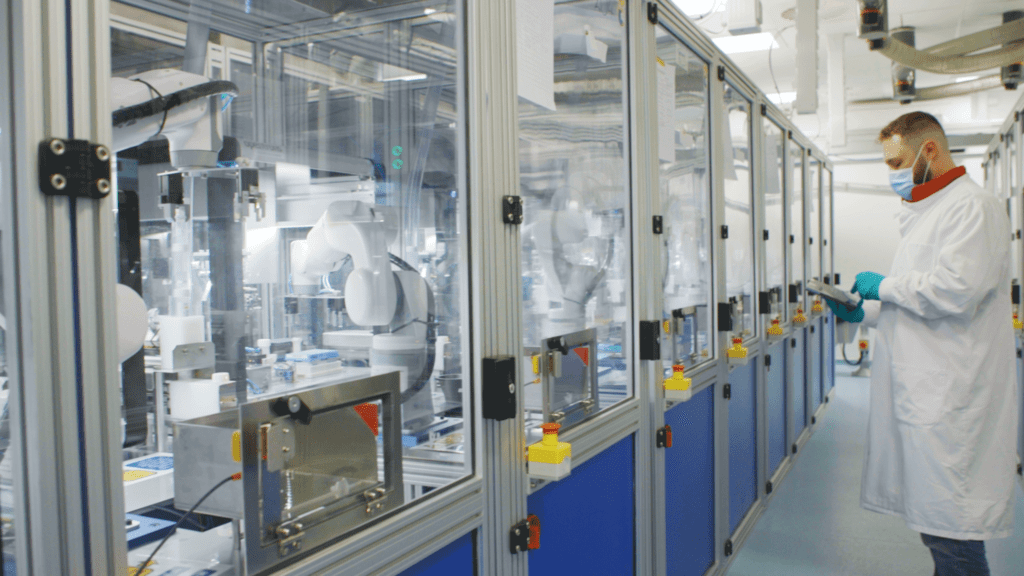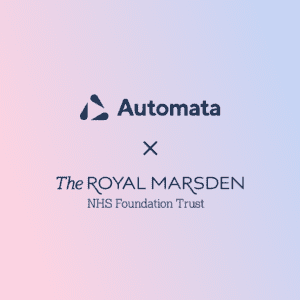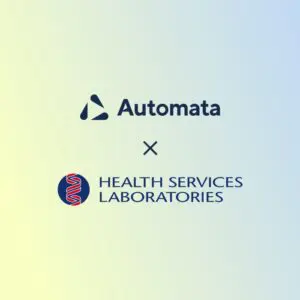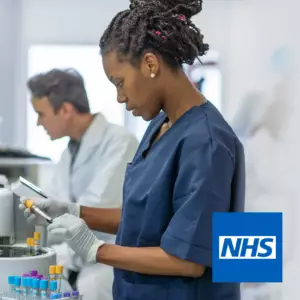

Working with Automata: Automation Engineer at NHS England
Stuart Findlow, Automation Engineer at the UHS Foundation Trust, talks to us about Automata’s work automating diagnostic testing in the NHS
In 2020, the University Hospital Southampton (UHS) NHS Foundation Trust established a programme using non-invasive saliva collection to deliver COVID-19 test results to participating schools, colleges and universities and other settings within 24-48 hours. The programme used Reverse Transcription Loop-mediated isothermal amplification (RT-LAMP) full form testing.
The programme required the testing of up to 100,000 saliva samples a day. With so many samples being processed, ensuring the scale, traceability and accuracy of results was a significant challenge. As a result, the UHS lab decided to implement lab automation in order to deliver the required results.
Given its viscous, inconsistent nature, saliva was a particularly challenging substance to aliquot. Traditional pipettes could often be clogged up, and so finding an automation partner solution flexible enough to support the UHS in delivering the project was difficult. We sat down with Stuart Findlow, Automation Engineer at the UHS, to understand more about how Automata was able to step in and work closely with their team to create a flexible solution for the lab’s specific needs.
How did Automata help your lab?
Automata has helped our lab automate a process that we were initially really struggling to scale.
Saliva is not an easy thing to prepare because it’s extremely variable. We also put in place several checks to ensure the accuracy of the delivery of saliva, and we needed to integrate results into the laboratory information management system. Additionally, we needed an automation system that could be flexible, as any problematic saliva samples needed to be able to be extracted and processed manually instead.
The automation system we required had to meet all these specific needs, so finding the right automation partner to support us was a real challenge. However, it was a challenge which Automata was able to deliver on.
What was your experience with other solutions in the market?
Automata’s competitors fell into two categories. Either they already had a product that would do maybe 80% of what we wanted it to do, and we needed an extra module to complete the task. Or they were an engineering company without a product in the field at all and although they could build one, they would be ‘reinventing the wheel’ every time. Initially, we worked with an engineering company to build a bespoke product, but it soon became apparent that this wasn’t going to work.
What we found with Automata, on the other hand, was different. They would look at both the products they had and the products that they didn’t have, but were available elsewhere, and integrated those together with great skill – rather than ‘reinventing the wheel’.

Why did Automata’s solution work?
Automata really revolutionised what we had in our automation lab.
Automata developed a solution which integrated their own robotic arm, Eva, with a pipetting robot from a third-party company. They also worked with another robotics supplier to commission a bespoke uncapper for vials going through the system. It was a very robust design.
Additionally, they developed software to link all of these components together. This allowed all the 40 workcells to be operated using a simple touchscreen ipad. The guys at the lab were able to pick it up really quickly.
The whole combined product was able to process all the saliva samples, from receiving the vial, uncapping the vial, dispensing the sample into a 96-well plate, and recapping the vial, before disposing of it.
Based on the system that we were working towards previously with the previous company that we’d gone with, it was just a revelation – an absolute revelation.
How was the process of working with Automata?
The process of working with Automata has been excellent. Since they set up an office on-site, they were available both in-person in the lab, or online if needed. That was great for us because they were able to log into their product and update the software and fix issues online, but they were also extremely responsive to physical, hardware issues in the lab.
But more than that, they’re just really easy to talk to. Automata don’t try to push something that they already have onto you to solve a problem. They think about your problem and look at fixing it the way that you want it fixed.
When you’re developing a bespoke process like this it is absolutely essential to have a team that works closely with you throughout the process. There are always going to be problems that arise, things that are unforeseen with projects like that. But having people on site to witness exactly what’s happening so that they can see for themselves and make the adjustments that are needed is absolutely invaluable.
The responsiveness and friendliness of the team, the ease of talking to them and getting some really thoughtful, constructive feedback and solutions is worth its weight in gold.
Our other work with the NHS

UK’s first robotic genomic testing facility for cancer patients launches World-leading cancer…
Read more UK’s first robotic genomic testing facility for cancer patients
Health Services Laboratories unlocks faster turnaround times for NHS pathology services collaborating…
Read more HSL unlocks faster turnaround times for NHS pathology with Automata
University Hospital Southampton (UHS) NHS Foundation Trust has signed a commercial collaboration…
Read more NHS Foundation Trust signs collaboration agreement with Automata to automate laboratories